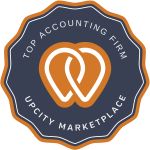


Business Profit and Value
Businesses exist for the purpose of turning a profit. Businesses churn out products and services, invoices for those goods, and track expenses of the company to the bottom line…Net Profit. Business owners make frequent decisions in their business geared toward increasing profits.
Profits, however, change frequently. A good month may be followed by a terrible month, which may subsequently be followed by a great month! With profit being so “mobile”, how do you know what your business is worth? Which month best reflects your normal profit? Which month reflects the actual VALUE of the business?
Usually, somewhere around this thought process, a business owner begins to question: What is my business actually worth?
If you look up business value or business worth online, you will receive a number of answers for how to estimate your business value. Many times, these methods result in answers that are far less than the owner anticipated. Almost every time, the value is not accurate as a metric for the actual value of the business.
A few of the ways you can estimate your business value are listed below, along with their fallacies.
Book Value
Book Value refers to the difference between the Assets and Liabilities of your company. Book Value, simply explained: if you closed the business today and were able to sell and recover all the assets on the balance sheet, for the values on the balance sheet, then pay the liabilities as listed, what you have remaining would be your book value.
Book Value is almost always a much lower value than the actual value of your business. Book Value does not take into account the income-generating potential of your company.
Revenue Multiple Valuation
Revenue Multiples are amongst the least popular of the “online” value models. A revenue multiple is based on the number of times the annual revenue of similar companies sold for. Revenue multiples are often fractions (companies sell for 0.50 or 50% of their annual revenue).
The biggest issue with a Revenue Multiple is it does not take net profit into account. A company doing $1,000,000 in revenue and turning a $250,000 net profit would have the same Revenue Multiple as a company doing $1,000,000 in revenue and ($100,000) in net profit. Obviously these companies do not have the same value.
EBITDA Multiple Valuation
EBITDA Multiples are one of the more popular quick value calculations utilized in a non-business valuation estimate. EBITDA means Earnings Before Interest, Tax, Depreciation and Amortization. Simply put, take Net Profit and add back these expenses.
EBITDA Multiples are “more accurate” than many of the quick calculations, as they begin from a basis of profit.
However, unless a Business Valuation is performed, normalization adjustments were not likely made on the Profit/Loss and Balance Sheet, which could lead to quite large discrepancies between the quick calculation and an actual valuation.
The most certain way to know the actual value of your company is to purchase a Certified Business Valuation.
Scope of this Article
Please understand a Business Valuation is quite a complicated procedure and this article is meant to “shed light” on what a business valuation is and includes. This articles is not intended to be a detailed explanation of a business valuation.
A business valuation is a laborious procedure, in which a Certified Valuation Analyst investigates your business, rearranges the assets, incomes, and expenses to reflect how the accounting would be reflected if the company were run in a way similar to a public company or by a potential investor. A business valuation investigates where and how money was earned, spent, and reported on the Income Statement and Balance Sheet.
Business owners are afforded many opportunities to lower taxes. These opportunities are legal and often in the best interest of the business owner. However, opportunities to lower tax simply translate into recognizing lower profit. Lower profit equals lower business sales price & lower business value.
Adjustments
The job of a Valuation Analyst is to research these “advantages” of business ownership and reset them “as if the company were reporting publicly or managed by investors.”
Often times, a business owner will employ family members who do not actually work at the company, as a benefit to the family member and the company. While this is not illegal, it would not occur in a publicly traded company. As such, the family members salaries and costs are “added back” to profit, as a new purchaser would not continue incurring that cost.
Similar adjustments are made for preferential rents. Many times, a business owner owns the building their business occupies. As such, the owner may charge a higher or lower than market value rent. In such cases, over market rents must be adjusted down to market value and the remainder added to net profit. Under market rents must be adjusted up to market value, and the difference subtracted from net profit. Many such adjustments are analyzed, though a three to five-year history of the company.
The Valuation
After adjusting the financials for “Owner Adjustments”, the analysis turns to researching non-recurring incomes or non-productive assets. One time incomes (sell of an asset or insurance proceeds) are not part of the normal operation of business, therefore, they must be removed from revenue. Outdated or non-productive assets (a side-by-side 4 wheeler or airplane on the books of a convenience store are examples) must be removed from the asset base, as they do not contribute to the income generation of the company.
Once these analyzations are made, the valuator will Value the company using three models
Asset Value
Asset Model values the company based on the value of the assets in the company minus the liabilities. Often times, this includes valuing the assets at liquidation value of the assets, as in the case of bankruptcy’s.
Cash Flow Model
In a cash flow model, profits are projected, typically for five years into the future, and a calculation made about the Net Present Value of the Company. The return results in a Discounted Cash Flow model that calculates the company’s current and future earnings, establishing a business value based on the future profitability of the company.
Market Value/Market Multiple
In the Market Model, the company is compared to, if available, similar publicly traded companies. Publicly traded companies have the most GAAP complaint accounting, in general. Therefore, they have better data for analysis. If similar companies are found, the private company is modeled after the Revenue or EBITDA multiples of the public companies transactions.
Discounts
Once the adjustments to the financials are complete and valuations are complete for each model, discounts must be applied. While there can be many levels of discounts, only the two primary discounts will be discussed here.
Discount for Lack of Control
Discount for Lack of Control (DLOC) is a discount applied to business values based on the lack of “power” or decision making by minority owners. Essentially, if you do not own a controlling interest (typically 51% or greater), you do not have control of the company and that portion of the business is worth less than the controlling interest. (Controlling interest owners can decide to pay dividends to shareholders. Controlling interest owners can bind the company to contracts, make decisions about the future of the company, grow or shrink the business. )
Discount for Lack of Marketability
Discount for Lack of Marketability (DLOM) is a discount applied to companies that are not public, thus not traded on a market exchange (DOW or NASDAQ). Market Exchanges make shares very easily assessable. They are easily bought and sold. Private companies do not have easily marketable shares, thus it takes longer (typically) to sell shares if someone wants to exit the company.
This leads to DLOM, a discount for a lack of being easily marketable. Typically, this discount averages around 25% for a company.
Business Valuations are growing in popularity and utility as they measure the value of a company, allowing a business owner to know if the decisions they are making are actually adding value to the company or just creating busy work! If the things a business are doing grow revenue, but do not increase the value of the company, the added revenue simply means you added more work!!
A Business Valuation requirement in an operating agreement is a great way to make sure an investor is not underpaid for their shares of a company. It also protects the business from overpaying for the shares of an exiting shareholder.
If you are interested in knowing and tracking the value of your company, discuss this with your current business analyst. Knowing the actual value of your company is HUGELY helpful in shaping the decision of a business owner.
Need a Business Valuation Now?
Brad is our in-house Certified Valuation Analyst and has extensive experience building value-adding business valuations as well as providing in-person business consulting services.
Visit our Contact Us page to reach out and learn more about how a business valuation can help improve your business strategy

